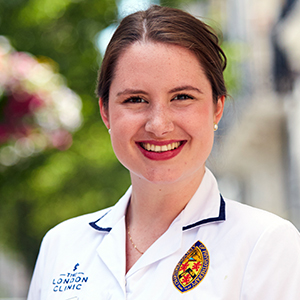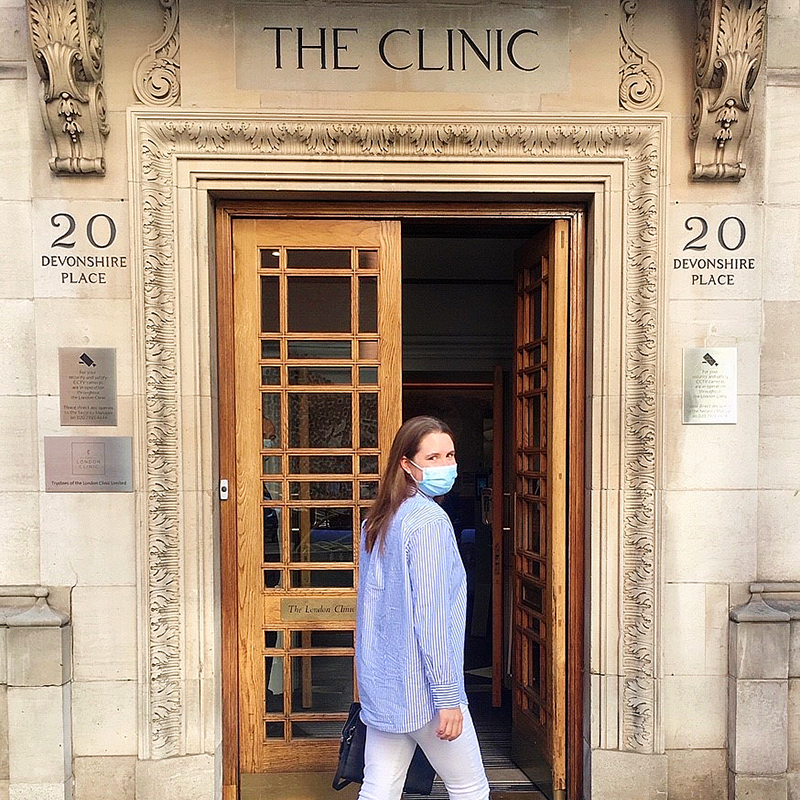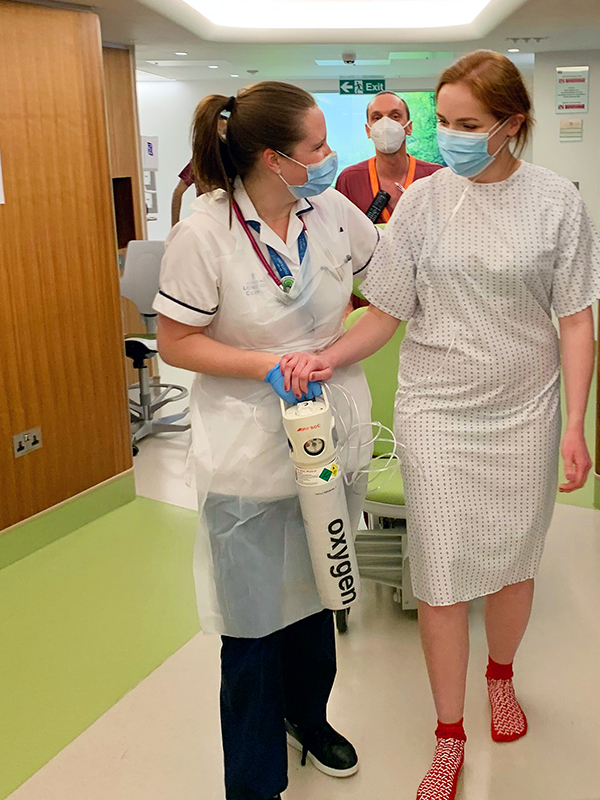Many of our patients are treated by one of our physiotherapists during their stay at The London Clinic, but what do our therapists do ‘behind the scenes’, when they’re not assisting patients? Here, Senior Physiotherapist Charlotte Church, who works on our intensive care unit and surgical wards, shares what a typical day in her life looks like.

About Charlotte Church
Charlotte graduated in Brussels with a Bsc and Msc, prior to moving to London and joining The London Clinic in 2016. She speaks English, French, Dutch and has good Arabic language skills from her classes at King’s College London. Charlotte works within the surgical physiotherapy team and has an interest in the care and management of head and neck patients. She also enjoys working with patients with respiratory conditions and to provide rehabilitation to those following intensive care stays.
08:50 - arriving at work

Time for work! I find there’s always a buzz in the air around Harley Street each morning. Even after working at the clinic for five years, I feel a great deal of pride when I think about where I work. It’s such a historical area of London and as a clinical professional there’s no other place I’d rather be.
After arriving at the clinic, I first head to the staff changing rooms to put my physiotherapist uniform on. We wear navy blue trousers and a white tunic that displays both the clinic’s logo and the logo for the Chartered Society of Physiotherapy (CSP), which reminds me each morning how lucky I am to be both a therapist and a carer for my patients.
09:00 - morning handover
My work day officially begins with a handover from my colleague in the digestive diseases unit with a hot cup of tea.
Our digestive diseases unit has been my main ward for the last few years. I’ve built some wonderful relationships with my peers located here. We look after complex patients and work together to ensure that their stay goes as smoothly as possible.
After this, the occupational therapists and physiotherapists then discuss our intensive care patients. Some of our most vulnerable patients are located in our intensive care unit so it’s important for our teams to work closely as part of a multi-disciplinary approach to ensure a successful rehabilitation for each individual.
09:30 - visiting my complex patients

Once our handovers have finished, the real work for me begins. I visit my most complex patients and work with the occupational therapists to create personalised weekly therapy plans.
My role involves helping patients who have experienced complex surgery regain their fundamental physical functions, such as their mobility, balance and strength. I am also respiratory trained, which means I look after patients who have complex airways, are receiving ventilation support, or are at risk of respiratory deterioration.
Since everyone is different, we take into consideration the individual needs, goals and desires of each patient by spending time with them and finding out what is important to them. Although I have quite a few years of expertise, I know that my colleagues at the clinic all have different experiences and ways of working so I’m fortunate to be able to lean on them for advice if needed.
12:30 - time for lunch
Lunch time! And a perfect time to catch up with colleagues. There’s a real sense of ‘community’ at the clinic and I often find myself bumping into senior staff members from different departments at lunch – it’s a good opportunity to informally catch up.
13:00 - team meeting
After lunch, my work continues and I pick up any last minute referrals from the wards.
Twice a month, the whole Therapies department meets and this gives me a chance to touch base with the clinic’s dieticians, psychological therapists, front desk team and physiotherapists from other specialities.
Although due to the pandemic we are meeting virtually at the moment, these calls provide us with the chance to celebrate each other’s successes and help solve any issues others may be facing. This year has been particularly tough so I also make sure to check in on everyone’s wellbeing.
15:30 – clinical teaching and supervision
During the afternoon I might take part in clinical teaching and supervision. These sessions allow me to reflect, teach, learn and develop my knowledge to make sure I am aligned with the team’s overall objectives. As well as personal development, I find that these afternoons offer a chance to plan for future cases and innovations in how we treat our patients.
16:40 – wrapping up for the day
Towards the end of my day, I visit the clinic’s Physiotherapy department on the sixth floor of our main building and meet with the Deputy Physiotherapy Manager to raise any issues, concerns or success stories from the day.
17:00 – leaving work
After handing over my cases to my colleague, I head back to the staff changing room to retire my uniform for the evening.
While changing into ‘civilian’ clothes, I take the time to start switching off mentally from work. I find that this helps me to relax and refresh after a busy day looking after patients, before starting all over again the next morning.
Further information
In May, staff from across The London Clinic joined forces to take part in Virgin Money Giving’s Captain Tom 100 Challenge. From collectively running 100km in 24 hours to swimming 100 laps of a local pool, our people are raising money equally for The Captain Tom Foundation and The London Clinic Charity, in support of our amazing Therapies team.
Disclaimer
Any views expressed in this article are those of the featured specialist(s) and should not be considered to be the views or official policy of The London Clinic.